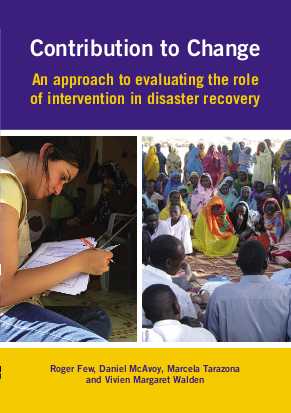
As the number of people affected by disasters has risen, so have the expectations placed on humanitarian agencies by donors, the public and the affected populations themselves. Agencies must now provide evidence of the impact of their interventions. But applying conventional evaluation methods can pose problems. How can we assess the difference that intervention makes? Is it ethical to consign some disaster-affected communities to control groups? How feasible is it to collect baseline data among people who have just been traumatized?
This guide provides a reliable and practical method for identifying the contribution an agency makes to changes to people’s lives in the recovery period following disasters.
